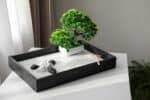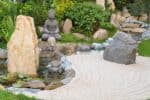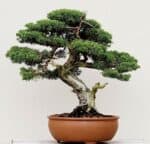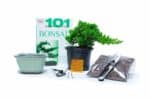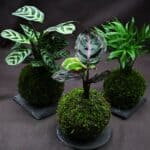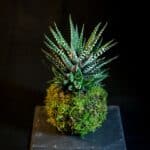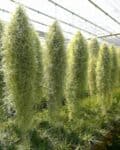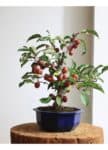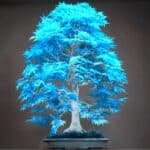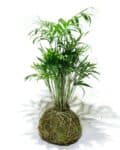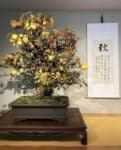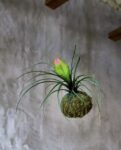A most fascinating botanical artform is the Kokedama! Like bonsai, it originates from Japan and the term “kokedama” is Japanese for “a ball of moss”. Although mostly an indoor plant, one may wonder if you can also move the kokedama outdoors.
So, can you hang kokedama outside? Yes, you can hang kokedama outside. If you plan to hang your kokedama outside, make sure you protect it from rain and direct sunlight by covering the kokedama with a cloth or plastic sheet.
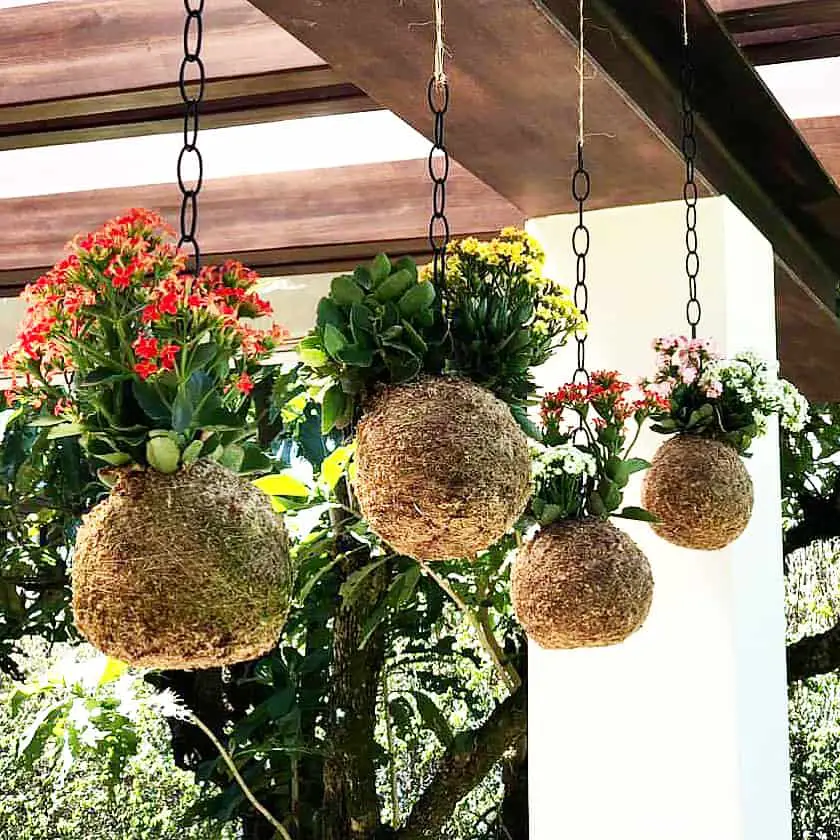

Depending on what type of plant you are wanting to put in your kokedama, it should be relatively easy to create one you can hang outside. However, there are many situational scenarios that should be addressed before you dive into this project and should be carefully monitored.
Don’t forget to read Everything You Need to Make Your Own Kokedama At Home.
Moss
Most moss requires moist shaded conditions, however, there are some varieties of moss that can handle more sun. The growing conditions for the ornamental plant can range anywhere from shade to partial shade or full sun. Therefore, in order to be placed outside, it would be ideal if the moss and ornamental plant had similar growing requirements: preferably full to partial shade depending on the type of moss you choose. Direct sunlight outdoors could be too harsh for the moss to survive.
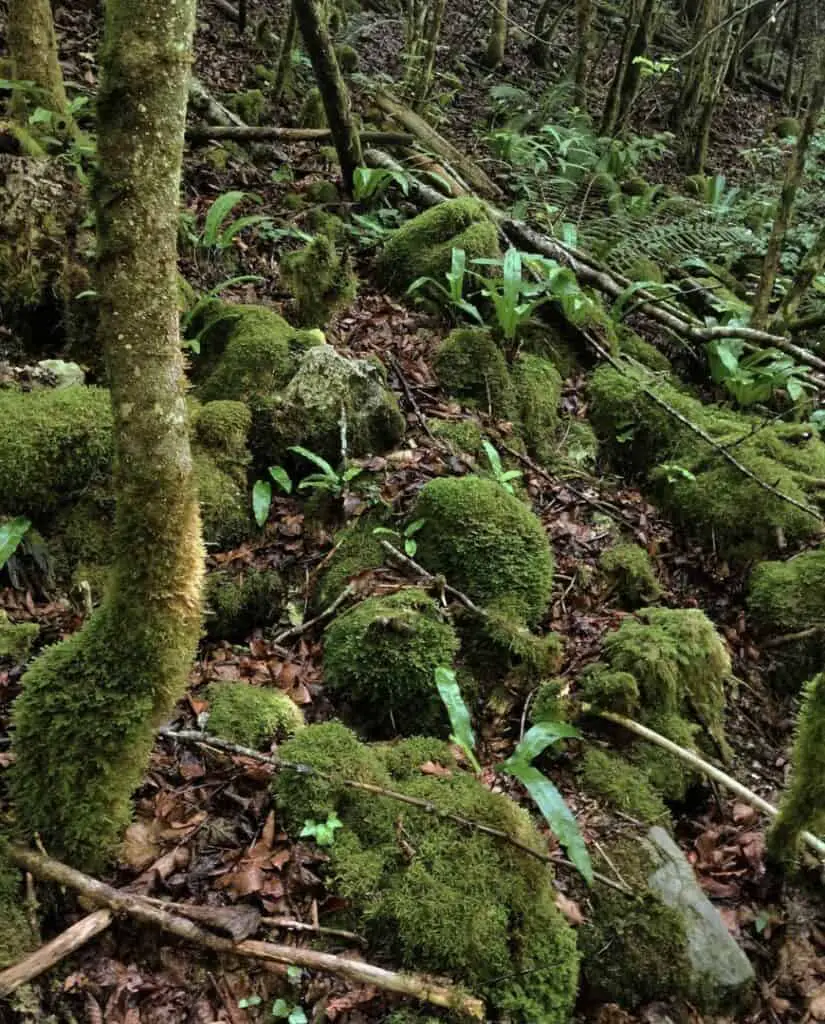
The life cycle of moss is very vital to the plants you place in your kokedama as well. Moss provide a great habitat and source of food for the roots of your other plants. They also perform the most vital of functions, such as filtering and retaining the water in your kokedama, removing the carbon dioxide from the soil, and stabilizing your kokedama’s overall atmosphere. They favor wet environments, which is perfect for when you mist or soak your kokedama. These plants may be small and inconspicuous, but their overall importance to your kokedama is life-sustaining. Below are different types of moss you can use for your kokedama:
- American Tree Moss – native to North America, like partial shade
- Haircap Moss – Tolerant of fertilizer, likes partial shade
- Spoon Leaved Moss – Likes partial sun and partial shade
- Springy Turf Moss – Common in grasslands and lawns, likes partial shade
- Heath Star Moss – Native to South America, likes partial shade
- Baby Tooth Moss – Does not tolerate full sun or hot temperatures, likes partial shade
- Pincushion Moss – Thrives in autumn and winter, likes partial sun to full shade
- Mood Moss – does not do well in soggy areas or full sun, likes partial to full shade
- Shiny Seductive Moss – grows fast, likes full sun
- Plume Moss – native to Canada, likes partial to full shade
- Ribbed Bog Moss – thrives in cool climates, likes partial sun to full shade
As you can see, the importance of moss is crucial, but also there are many different varieties that thrive in different zones and climates. For example, if you live in a cooler climate, you will want to invest in pincushion moss instead of springy turf moss that thrives in hot temperatures. You will also want to match the type of moss to the type of plant. Matching the type of plant to the moss is crucial to make sure it survives. Make sure to do your research to see which mosses thrive with which plants. Not only will your kokedama be much easier to keep alive, it will thrive for a much longer period of time.
The link below is to a website of great value. Not only does it help you find the right plant (in this case moss) you are looking for, it can also detect your zone and will give you a list of what plants will thrive in it. From a scientific perspective, kokedoma is a manmade symbiotic relationship were the acids produced by the roots of the moss help solubilize the nutrients in the soil, making them available to the plant. This is one of the earliest insights in to the science of soil microbiology, which is gradually making the world less dependent on commercial fertilizers that are made from minerals mined from deep within the bowels of the earth. This allows for kokedomas to be able to be grown and sustained even without the mining of minerals. The moss exudates also improve the availability of fertilizer that the hobbyists add each month.[RD2]
To purchase your moss, and even the other plants to put in your kokedama, click the link below.
Not only is the type of moss very important to your kokedama, but like previously mentioned, so is the soil you will use and the zone of your residence. Your planting zone will ultimately determine if you can put your kokedama outside and if it will thrive. This is what we will cover in the next section.
Interested to know more? Read also :
– Can You Use Spanish Moss For Kokedama?
Planting Zones
Planting Zones also need to be carefully considered. For example, if you live in a planting zone that is warm year round like our southern states of Florida, Texas, and Georgia, you may just be able to leave your kokedama outside most of the time except for inclement weather. And obviously in those areas that have cold winter temperatures, you would need to bring the kokedama indoors for the winter. Additionally, if you choose varieties of plants that require shade, the space outside where you choose to locate your kokedama would have to be shady essentially all day like just the right spot under a tree!
Planting Zones set guidelines to help gardeners understand the conditions in which their gardens and plants need to grow. Like previously stated, to have a successful kokedama, you need to choose your plant varieties very carefully depending on your planting zone. Some of the more popular plants and combinations are below. However, just remember where you want to place the kokedama when choosing your plants. For example, if you want to place your kokedama under a tree, be sure to combine moss and plants that like the shade.
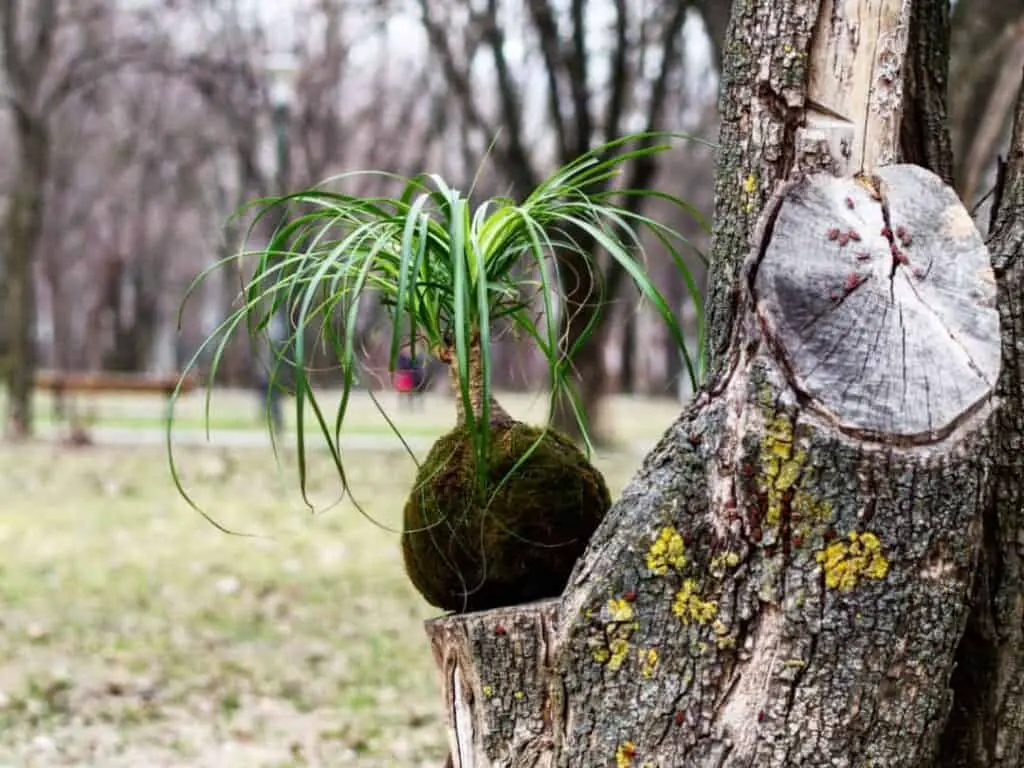
If you are planning on bringing your kokedama in during the fall and winter months, be sure to select a plant and moss combination that can handle warmer and more humid temperatures. Not following these guidelines would be unwise and could lead to the plant not being able to survive. Below is a list of what plants and mosses go well together based upon their zone and climate:
- Acrocarpous moss and Virgina Blue Bells
- Pleurocarpous moss and May Apple Plants
- Pincushion Moss and Columbine Flowers
- Plume Moss and Lily of the Valley
- Haircap Moss and Trilliums
What makes the art of kokedama so fun is how you can design them. There are so many various plant combinations to choose from, and as long as you choose a moss and plant that compliment one another, you are well on your way to growing the perfect kokedama! Before choosing your plants and mosses, however, be sure to check your zone. This can be done online or at any local nursery or home improvement store.
Planting zones are listed on the tags of the plants, as well as what they pair well with and which would help them thrive the most. This can be helpful if you choose to expand your kokedama collection as well!
Where to Put Your Kokedama Outside
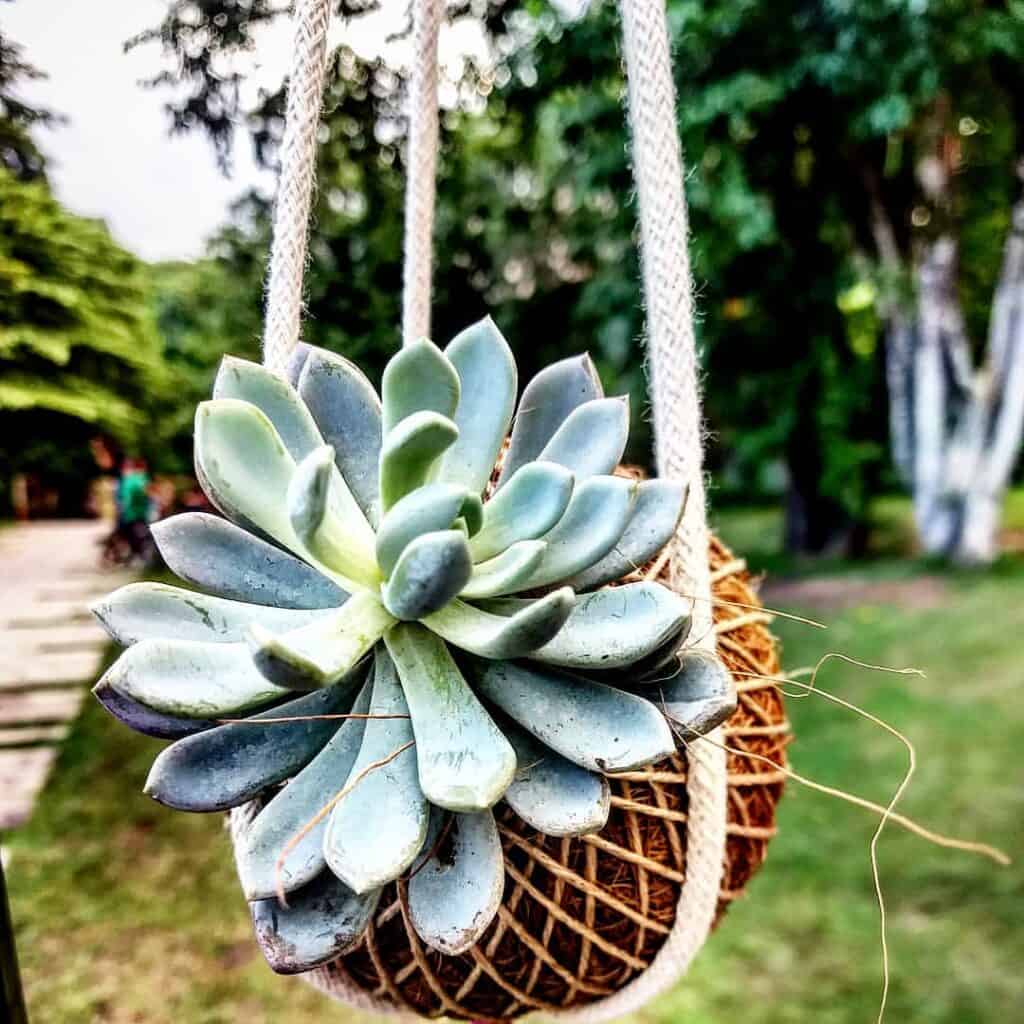
Another helpful hint when planting your kokedama outside is to place it where you know it will thrive. For example, if the plants you chose are prone to growing mold and the air is too cool, you will have to move your kokedama to a spot with more sunlight. A sun porch or a room with great lighting would be ideal for this. Another ideal spot for a kokedama would be in a gazebo or an all-seasons room. As long as you keep the temperature in these outdoor places mild, your kokedama will thrive there. If the temperature changes too drastically, or if it were to be too hot or too cold, the kokedama may not survive.
Be sure to watch your water, as well. Depending on what plants and moss you choose, your planting zone, and your annual rainfall, you may have to water your kokedama frequently, or even move it somewhere outside that is less moist. Remember to do your research on how well your plant/moss combination does in a rainy versus dry climate and make decisions regarding the placement of your kokedama outside based upon that. Below is a list of different ways you can hang your kokedama outside:
- Entryway
- On the door
- On a birdcage
- An orb planter
- Through a vegetable garden
- Porch Planters
- Globe-shaped Hanging Planters
- Hanging Herb Gardens
- Planting wall
The art of growing a successful kokedama can be challenging and a quite rewarding learning endeavor. Give it a try! It is fun to see what you can create and maybe even expand upon it!



